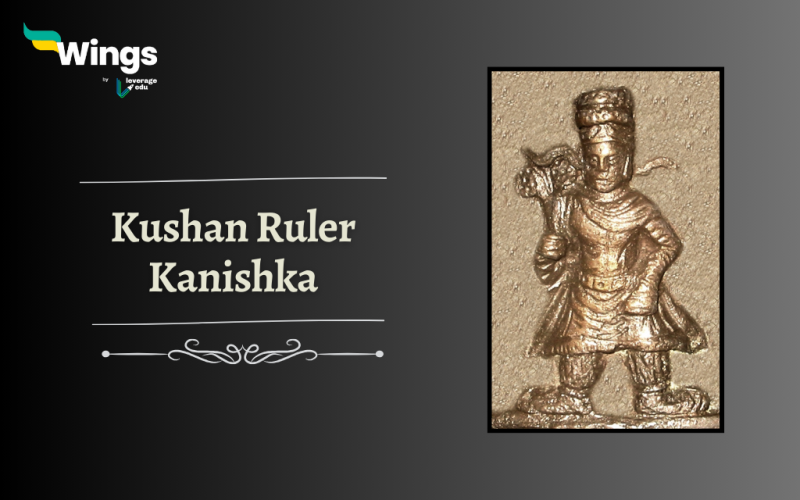Kanishka was an influential and renowned king from the Kushan dynasty who ruled over a vast empire in ancient India. His reign which spanned from around 127 to 151 CE, had a significant impact on the socio-political, religious and cultural aspects of the region. This article delves into the life and achievements of Kanishka, highlighting his contributions and influence during his rule.
Table of Contents
The Rise of Kanishka
Kanishka ascended the throne of the Kushan Empire after succeeding his father, Vima Kadphises. Under his leadership, the empire expanded significantly encompassing regions from present-day India, Pakistan, Afghanistan, and parts of Central Asia. His military campaigns helped extend the empire’s boundaries and consolidate his power.
Also Read – Gautam Buddha: Real Name, Life and Teachings
Kanishka’s Contributions
1. Promotion of Buddhism – Kanishka is believed to be a patron of Buddhism. He convened the Fourth Buddhist Council in Kashmir, bringing together scholars and monks to discuss and preserve Buddhist scriptures. This council led to the compilation of texts and the spread of Buddhism throughout his empire.
2. Trade and Commerce – His empire was strategically located along the Silk Road, which helped in facilitating trade and commerce for the dynasty. The Silk Road served as a crucial route for the exchange of goods, ideas and culture between the East and the West. Kanishka’s support for trade and infrastructure development helped in the economic growth and prosperity of his empire.
3. Coinage and Monetary System – Kanishka introduced a standardized coinage system, which standardized the weight and purity of coins in his empire. These coins were known as “Kanishka coins,” and featured Greek, Roman, and Indian elements. His uniform monetary system contributed to the stability of the economy and facilitated trade with other regions.
4. Art and Architecture – During Kanishka’s reign, the arts and architecture flourished. He built numerous Buddhist stupas, monasteries and sculptures, showcasing the blend of Greco-Bactrian and Indian artistic styles. The Gandhara and Mathura School of Art is influenced by Kanishka’s patronage.
5. Construction of Kanishka Stupa – Kanishka’s most notable architectural feat was the construction of the Kanishka Stupa in Peshawar, Pakistan. This grand monument is believed to be one of the tallest stupas in the ancient world and served as a sacred site for Buddhist pilgrims.
Also Read – What are the Noble Eight-Fold Paths of Buddhism?
Facts about Kanishka
- He is believed to be the originator of the 78 AD, Saka Era.
- Kanishka instituted the 4th Buddhist Council and convened the Council in Kashmir at Kundalvana.
- It was during his rule, that Mahayana and Hinayana Buddhism were differentiated.
- During his tenure, scholars like Asvaghosa, Vasumitra, Charaka, Parsva, Nagarjuna, etc contributed and thrived to literary heights.
- He also conquered regions of China and was responsible for spreading Buddhism in China.
Legacy Of The Ruler
Kanishka’s reign left a lasting impact on the regions under his rule. His promotion of Buddhism helped establish it as a prominent religion in Central Asia, influencing the religious beliefs of subsequent generations. The Mathura School of Art, which was influenced by Kanishka’s royal patronage, became a significant artistic centre, leaving behind a rich artistic legacy.
Furthermore, his inclusion of Greek, Roman, Iranian and Indian elements in his coinage system reflects the multicultural and cosmopolitan nature of his empire. This cultural exchange and integration formed the stone of the future development of Central and South Asia.
Also Read – Buddhist Education System: Features, Role & Merits
Kanishka was a legendary king of ancient India and remains an iconic figure whose contributions continue to be acknowledged and revered. His support for Buddhism, patronage of art and architecture, promotion of trade and establishment of a standardized coinage system highlight his visionary leadership and enduring influence.
Relevant Blogs
That’s all about the Kushan ruler Kanishka! If you want to know more about topics like this, then visit our general knowledge page! Alternatively, you can also read our blog on general knowledge for competitive exams!
 One app for all your study abroad needs
One app for all your study abroad needs













